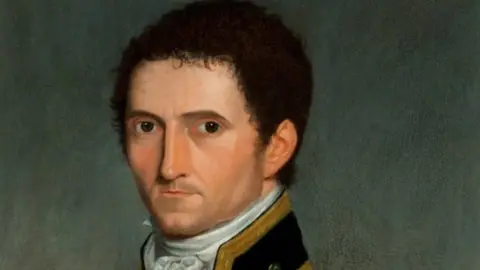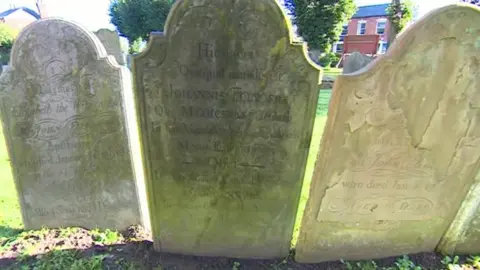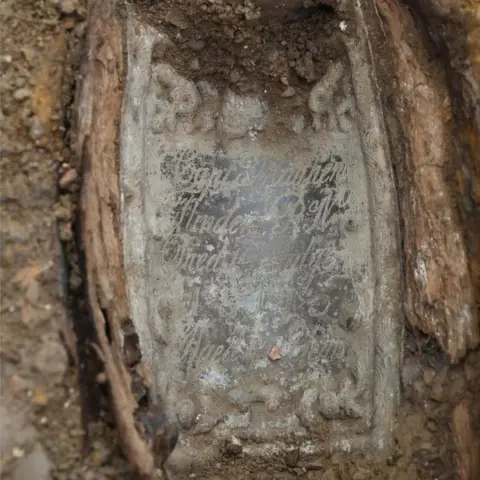Remains of explorer Matthew Flinders found in HS2 dig return home
 Art Gallery of South Australia
Art Gallery of South AustraliaThe remains of an explorer credited with naming Australia that were rediscovered during work on the HS2 rail project will return his home village.
Captain Matthew Flinders, from Lincolnshire, led the first circumnavigation of Australia.
His remains were identified after an excavation at St James's burial ground in Euston, London, earlier this year.
They will now be reinterred in St Mary and the Holy Rood Church in Donington.
It follows a request by his descendants and the local community that he be returned.

The Rev Charles Robertson, vicar of St Mary and the Holy Rood, said: "It is with great honour and joy that we received the good news that the mortal remains of Captain Matthew Flinders will come to Donington.
"It is a privilege to welcome home this great explorer to rest in peace in his home church."
He said Flinders' remains would take pride of place inside the church in a corner dedicated to the explorer.
"We thought it more appropriate to inter Matthew Flinders inside the church where people will be able to visit him whatever the weather," he said.
Flinders joined the navy aged 15 and he made several coastal explorations of Australia, completing the circumnavigation in 1803.

Helen Wass, HS2 Head of Heritage, said: "It is fitting that the last voyage of Captain Matthew Flinders will be back to the village of Donington where he grew up.
"We are pleased to be playing our part in his last journey."
His remains will now be transferred to the Diocese of Lincoln for safekeeping until burial arrangements can be made.
 HS2
HS2It was known Captain Flinders was buried at the site in London.
However, the headstone marking his grave was removed in the 1840s, and it was thought his remains had been lost.
Archaeologists were able to identify his coffin by a lead breast plate placed on top.

Follow BBC East Yorkshire and Lincolnshire on Facebook, Twitter, and Instagram. Send your story ideas to [email protected].
